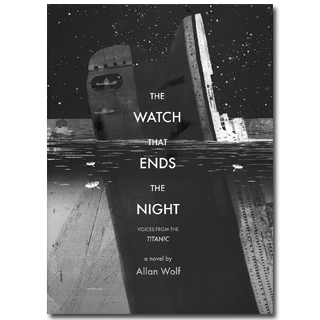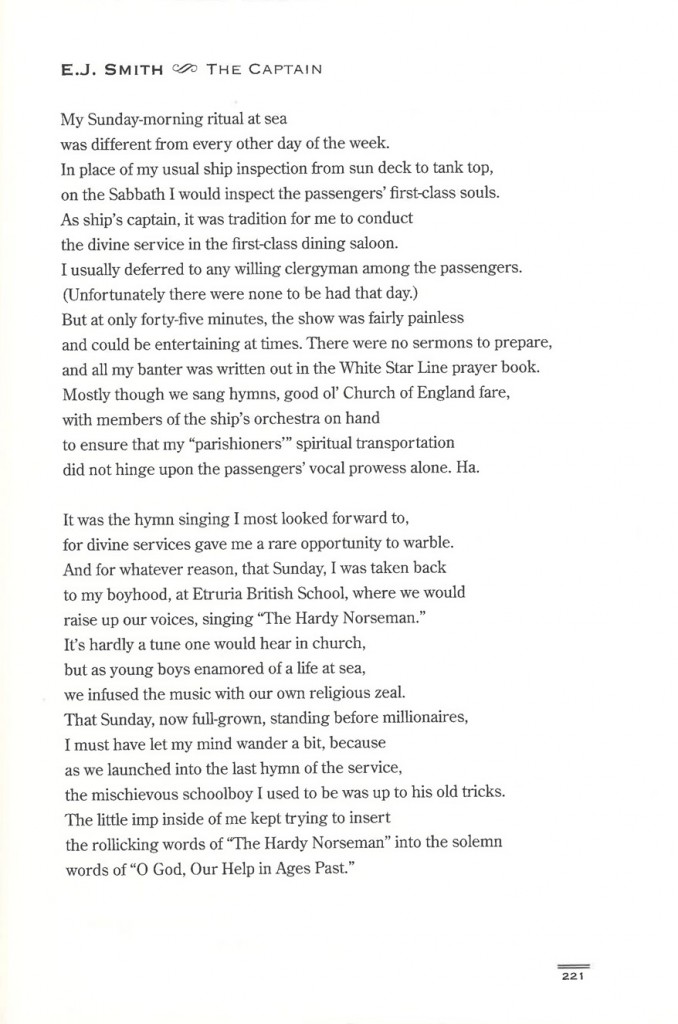
A FEW OTHER EVENTS FOR
JULY 13:
- Happy birthday Marcia Brown (Stone Soup, Once a Mouse…, Shadow).
- Best birthday wishes to Ernö Rubik, the Hungarian architect who invented the Rubik’s Cube.
- On a related note, it’s International Puzzle Day. Read The Calder Game by Blue Balliett, illustrated by Brett Helquist, and From the Mixed-Up Files of Mrs. Basil E. Frankweiler by E. L. Konigsburg.
- It’s National French Fries Day. Read My Mother is a French Fry and Further Proof of my Fuzzed-Up Life by Collen Sydor and French Fries Up Your Nose by Margaret Ragz.
On July 13, 1864, John Jacob Astor IV was born in Rhinebeck, New York. He would become the richest man in the world—a land developer, inventor, and even author of a science fiction novel. Today Astor is best remembered as one of the victims of the Titanic.
He serves as one of the multiple narrators of today’s book The Watch that Ends the Night by Allan Wolf. This amazing re-creation of the journey of the Titanic provides ample opportunity for the rich and poor—even the ship’s rats—to tell their version of the story. When I first read this book, I thought it could be best used in high school. But I was happy to learn from my good friend Betty Carter that it has been extremely popular in Texas middle schools, grades six through eight.
In a book of more than five hundred pages, Wolf uses free verse to give voice to two dozen members of the crew and passengers to relate the fateful story of the Titanic. He begins this saga with John Snow, an undertaker, who must remove all the dead bodies from around the wreckage of the ship, and he gives the final voice to one of the ship’s rats. In between, he moves masterfully from one person to another, weaving each saga in and out of the events that led to the demise of this luxury ship. Even the fatal iceberg has its say in Wolf’s account of events. Children like Frankie Goldsmith, the builder Bruce Ismay, a baker, immigrants, a confidence man, the “unsinkable” Molly Brown all present their side of the story. But the events have been related in appropriate chronological order—from the ship’s setting out, to the final morning. Readers move between decks; they observe the preparations for keeping more than two thousand people fed and satisfied on this ocean voyage. By the time the story turns to its inevitable tragic outcome, readers have learned not only history but they have also gotten to know these passengers. In the end, Wolf provides notes about their fates.
I’ve long admired Allan Wolf’s poetic novels but think he has never been better than in The Watch that Ends the Night. Although I know how the story ends, he still had me reading nonstop—I could not put this book down. I suppose that I always long for a different ending. This is a perfect book to pair with a new title by Deborah Hopkinson, Titanic: Voices from the Disaster, particularly for those who like to bring fiction and nonfiction together. High summer makes a great time to revisit the story of the Titanic, far away from snow or icebergs.
Here’s a page from The Watch that Ends the Night:
Originally posted July 13, 2012. Updated for 2019.







I am so glad to see this book here. I absolutely loved it and have been encouraging my library patrons to read it. I’ve heard lots of good comments from them, too. The audio version is especially good to listen too.
The striking artwork on the cover is by Jon Klassen, author and illustrator of I Want My Hat Back.
Yes, Teresa, thanks for pointing this out. It gives some idea of Jon Klassen’s range as an illustrator.
Being the 100th anniversary of the Titanic sinking this year was a great chance to rediscover the enchantment and fascination the tragic disaster has played in our world since that sad day in April 100 years ago. This year led to many opportunities in my fifth grade classroom through an article in National Geographic for kids, Scholastic News, Titanic Sinks, by Barry Deneberg, You Wouldn’t Want to Sail on the Titanic by David Stewart and All Stations! Distress! by Don Brown. It was a unit that children were highly motivated by and led to many great discussions about Titanic legend and how to use clues to discern fact from fiction. I imagine some of these poems in isolation would make a good edition to a unit even in upper elementary grades and/or a way to differentiate. Can’t wait to check the book out and see.
Matt: Thanks for mentioning these other titles. Yes, you could pull out some poems for younger readers. Your fifth graders might also like Hopkinson’s Titanic: Voices from the Disaster.